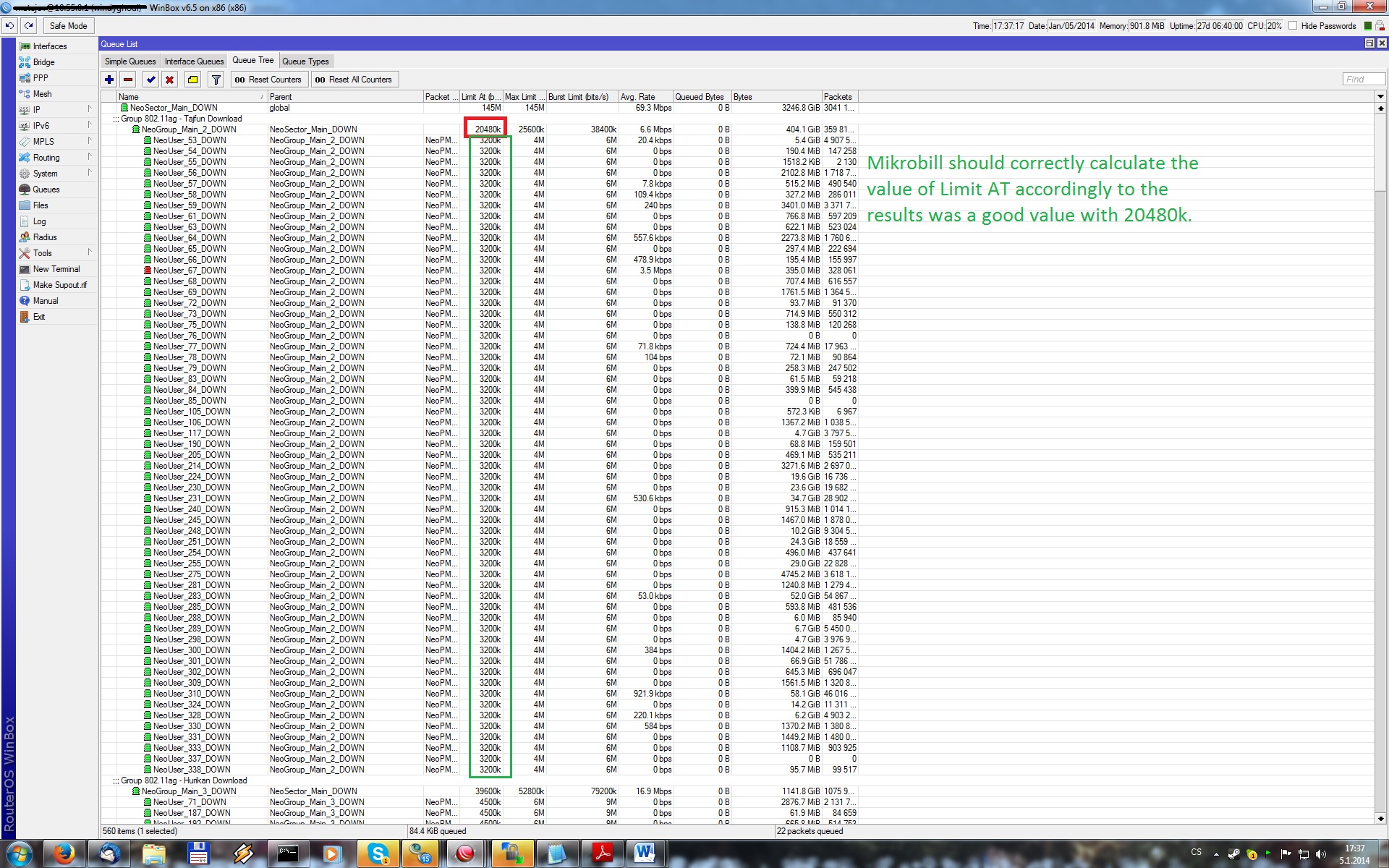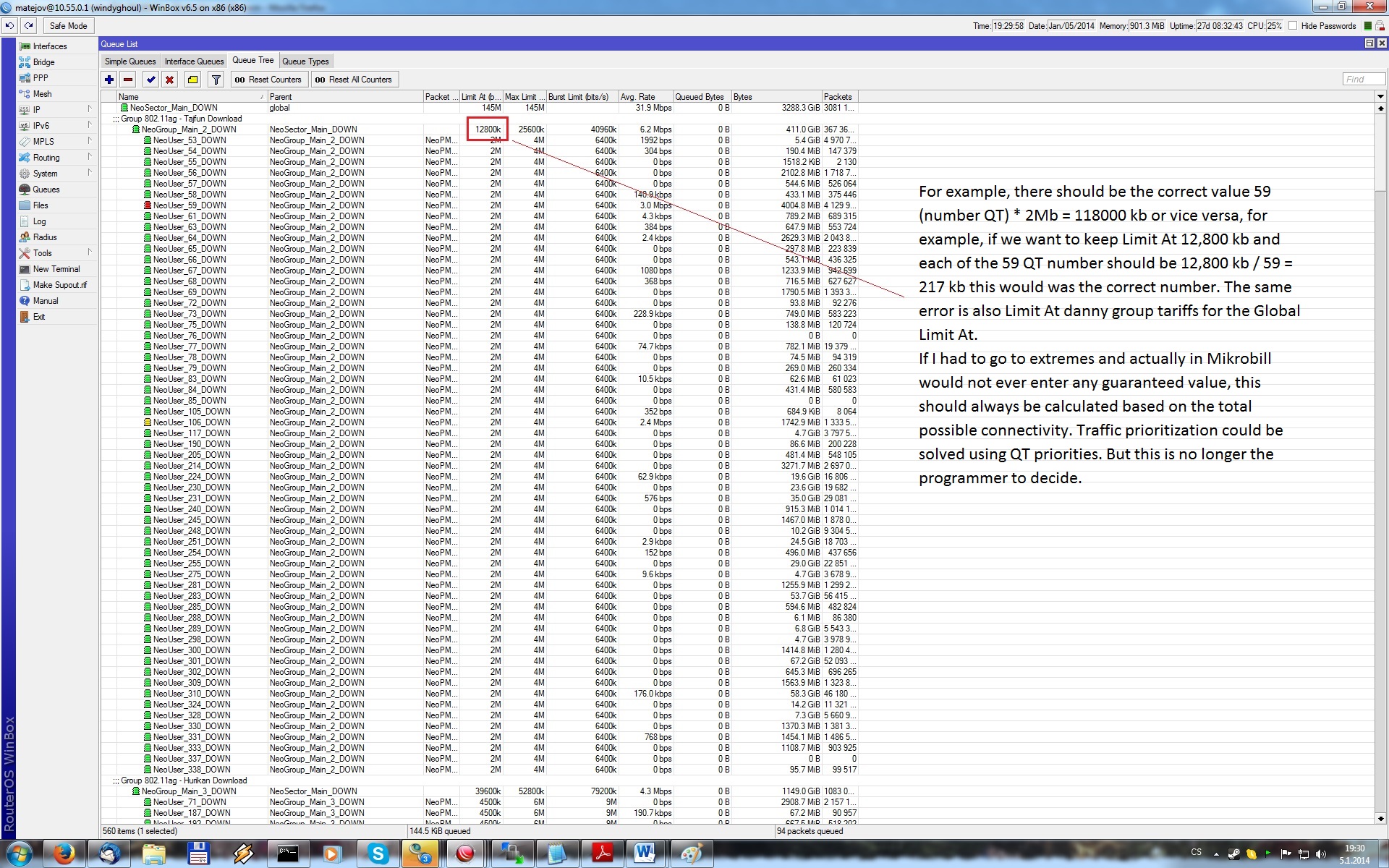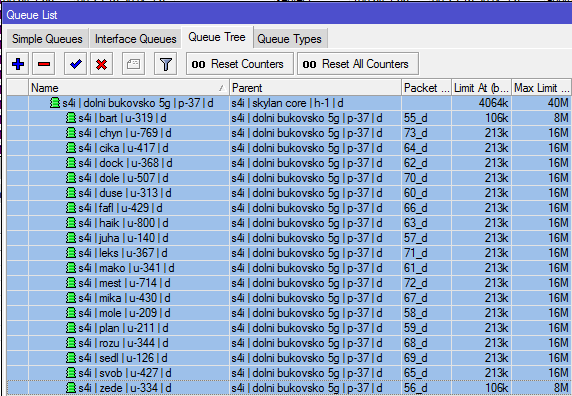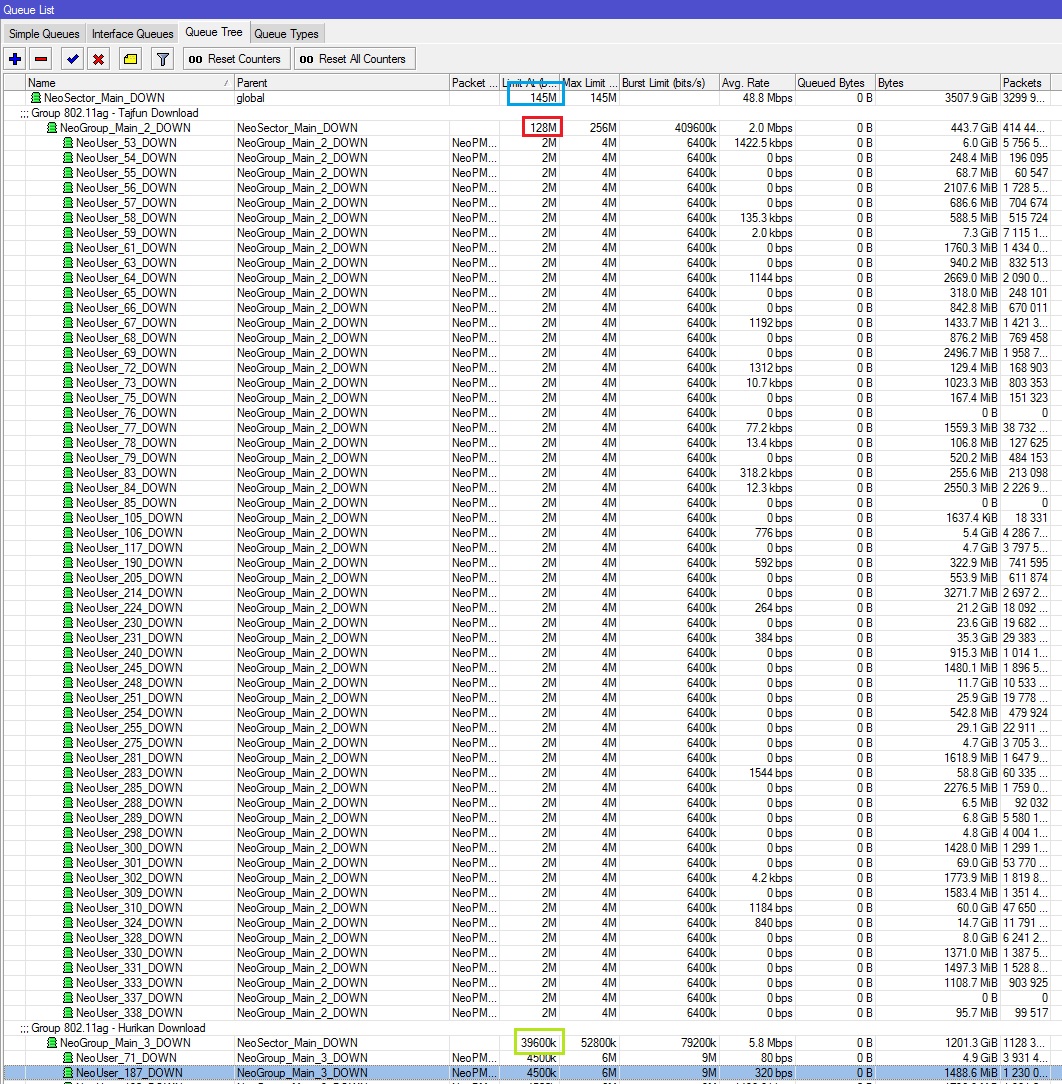Hello, I would question the programmer in shaping Mikrobillu. I use the QT model with kind PCQ. I do not know why but the value Limit At the customer is calculated from the value of which is shown as a percentage for a given tariff rate thus guaranteed. But this is the wrong model QT because AT Limit to be the sum always with the same result of higher values Parent Limit At. I am sending a screen where it is clearly seen that the sum of the Limit AT exceeds the upper limit of At. This may be under heavy load line problem, because the shaping actually stops working.




